Qualcomm Snapdragon Wear 4100+ gives Wear OS new life
Wear OS is getting another chance, guys. Qualcomm just announced its new wearable chipset, the first real upgrade to the Snapdragon Wear line in more years than I can keep track of. The new Snapdragon Wear 4100+ is here with plenty of improvements, we just hope they are dramatic enough to improve the state of wearables on Android over that previous chip.
Wear 4100 vs. 4100+
Qualcomm actually announced two wearable chips today, the Snapdragon Wear 4100 and 4100+, which are both based off of the Snapdragon 429, a mobile processor first introduced in 2018. While that date probably makes you a bit nervous, we are so far ahead of the Snapdragon Wear 3100 with this chip that it addresses concerns across all categories.
We have two chipsets, the Wear 4100 (SDA429w) and the Wear 4100+ (SDM429w). The differences here come down to two things, and that’s the co-processor included in the 4100+ (4100 doesn’t have one) as well as the 4100+ being certified for Wear OS watches. In other words, the Wear 4100 should provide similar performance to the 4100+, but you likely won’t see it very often in the Wear OS space.
For the rest of this post, we’re really only going to focus on the 4100+. Cool?
Snapdragon Wear 4100+ Specs
The Snapdragon Wear 4100+ is a 12nm chip with four Cortex-A53 cores, Adreno A504 GPU, separate modem/GPS and sensor/audio DSPs, faster RAM, and a co-processor. The co-processor (QCC1110) is the same as the co-processor in the Wear 3100, but because of the improvements in the 429w chip, it’s able to do even more.
The new 4100+ produces 85% higher performance, with RAM speeds up 85%, and a 2.5x faster GPU over the previous Wear 3100. It should see decent power reductions too, with 22% reduction in GPS use, 35% reduction while playing music over Bluetooth, and a 42% reduction when scrolling through notifications.
As far as battery life goes, Qualcomm estimates that watches could see 25% longer battery life when in daily use. A watch with a sports mode could see the sports experience lsat up to 18 hours. Did the Wear 4100+ add an extra day of battery life? Probably not, but it should help squeeze those extra few hours out.
New Wear 4100+ Features
We should see a substantial improvement in the features that Wear OS will be able to offer with the Wear 4100+. Outside of the performance boost, we are getting Bluetooth 5.0, a richer ambient mode, improved sports mode, and what could be a game-changing enhanced watch mode.
From an interactive experience, Qualcomm is promising greatly improved multi-tasking and an Assistant experience that doesn’t suck like it does on the Wear 3100. For example, while you have a fitness activity running or are on a call on the 4100+, you shouldn’t see the death stutters and slowness when launching Google Assistant or reading notifications, like you might on the older chip.
When in Ambient Mode (always-on screen), watches will now support 64K colors (16 bit) with better image rendering. The Wear 3100 could only do 16 colors (4 bit). You also have number kerning, a smoother second hand, live complications, and constant heart rate monitoring, all on the Ambient Mode. The Ambient Mode is going to be awesome for the watch face game and for those wanting their smartwatch to always look more like a real watch.
Oh, did I mention that the 4100+ does sleep tracking? It does. Google better hurry up and bring it to Wear OS.
The improved Sports Mode also supports 64K colors, number kerning, and both sensors and maps offloading. In other words, the Sports Mode should be much, much richer of an experience than it was on the 3100. Not that anyone used Sports Mode on the 3100 because it didn’t exist, but you know what I’m saying.
Finally, the Enhanced Watch Mode is a really big deal here compared to the experience on the 3100. You may recall that Watch Mode on that old chip might have given you week-long battery life, but it took away all smarts on your watch and was mostly useless (it did show date). Now, Watch Mode can show up to 64K colors, still track steps and heart rate, show a battery indicator, and give you alarms and reminders and haptics.
Again, we don’t know how big of a performance or battery jump we’ll see until we get a watch on the wrist, but the set of features we should get from watchmakers sounds pretty great.
First 4100+ Watches
These two 4100 chips are available now and shipping to partners, so that means the first Wear OS watches with the 4100+ should be along shortly. We know for sure that Mobvoi is already cooking up the first watch dubbed TicWatch Pro 3. You can read more about that watch right here.
Do we think we’ll finally get a Google Pixel Watch now? Please, Google.
You excited, Wear OS folks?
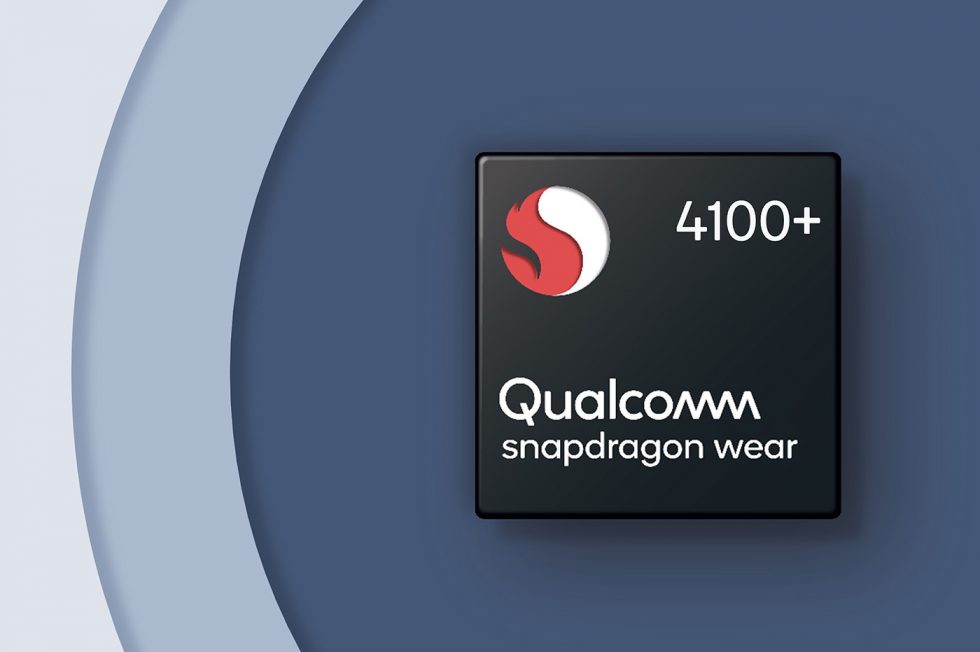
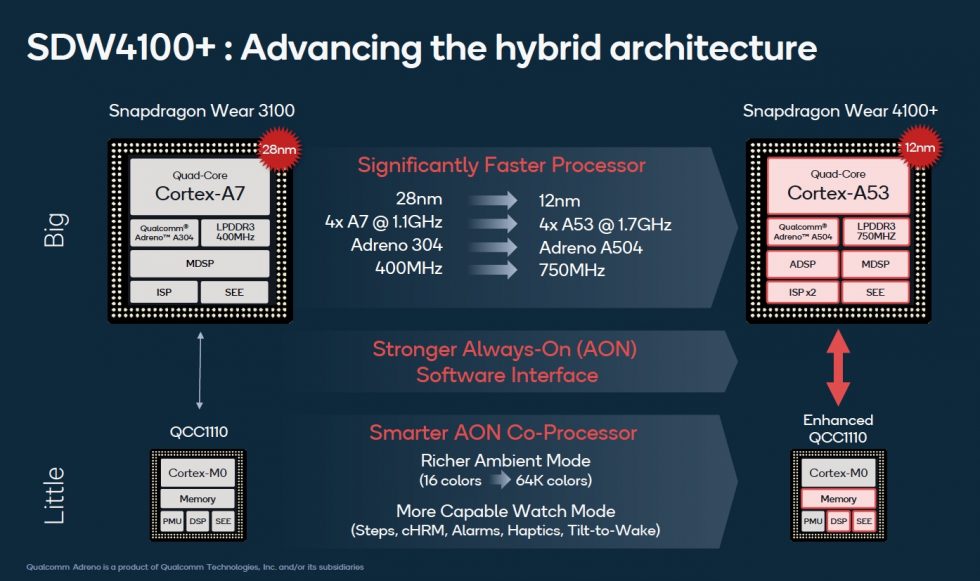
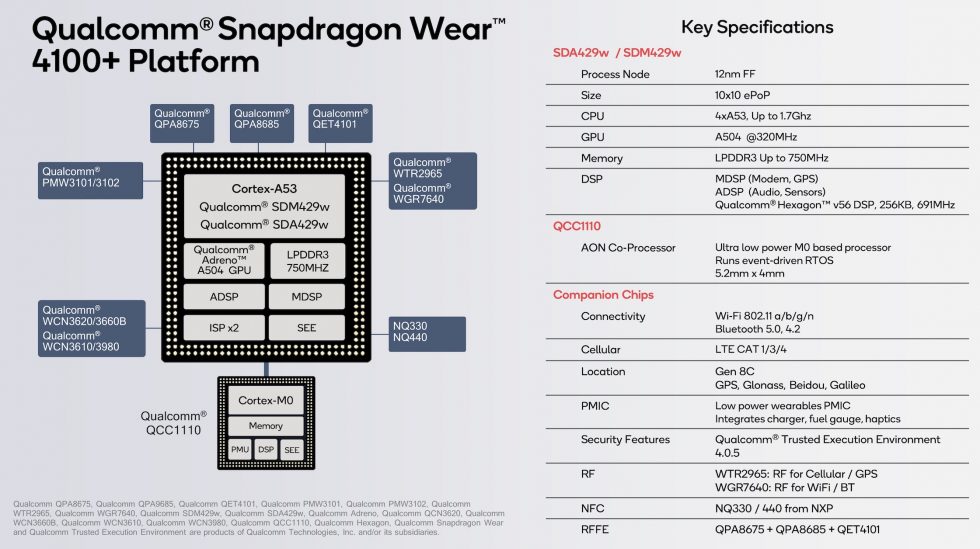
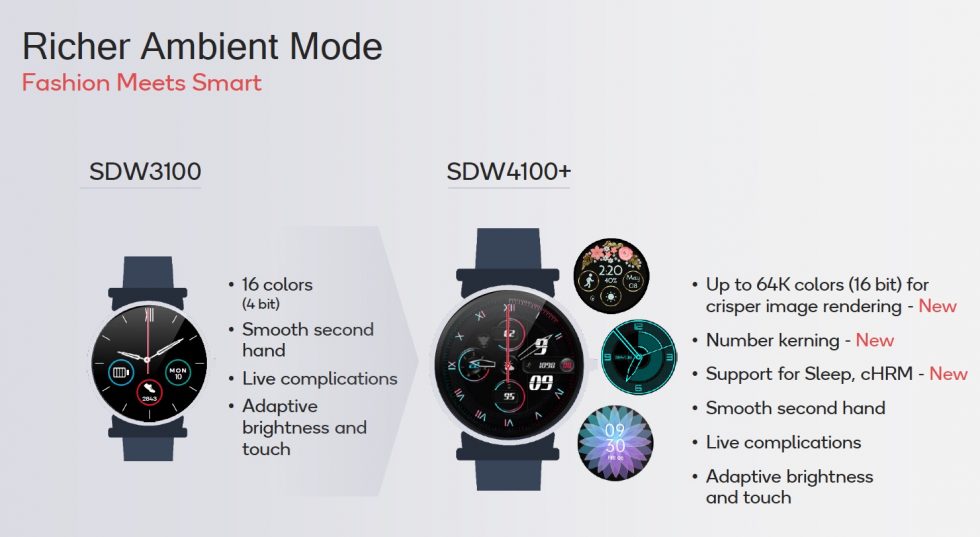
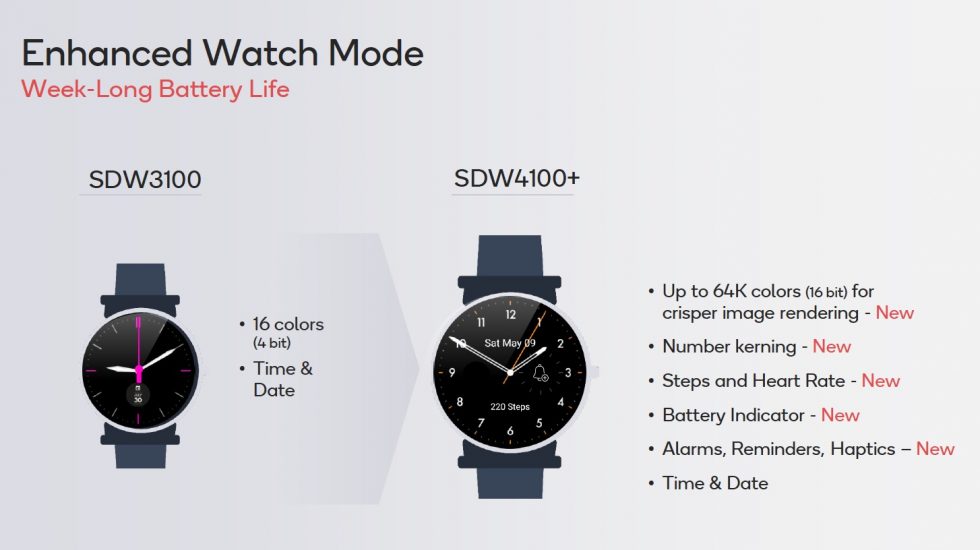
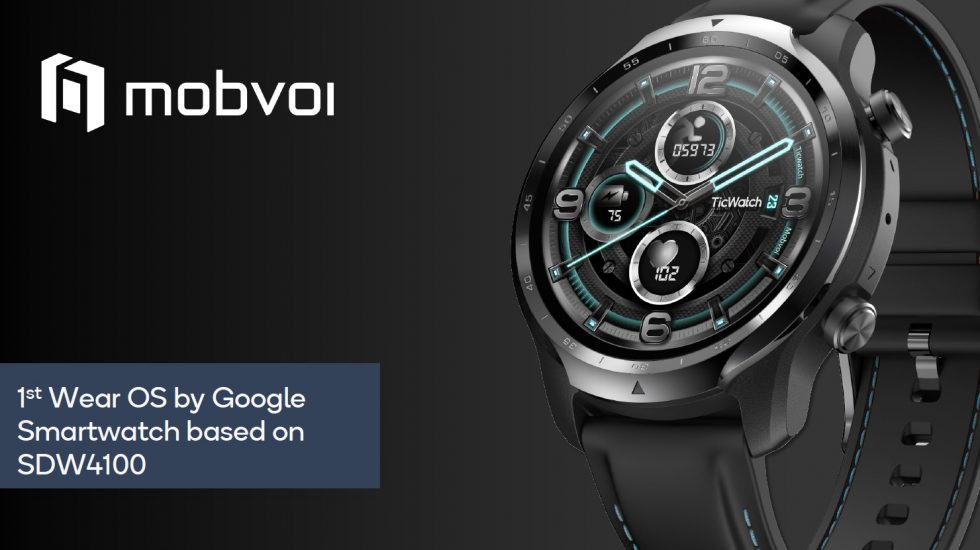
Collapse Show Comments40 Comments